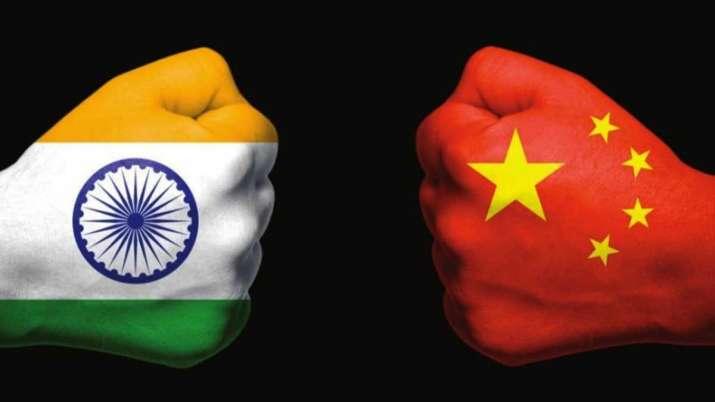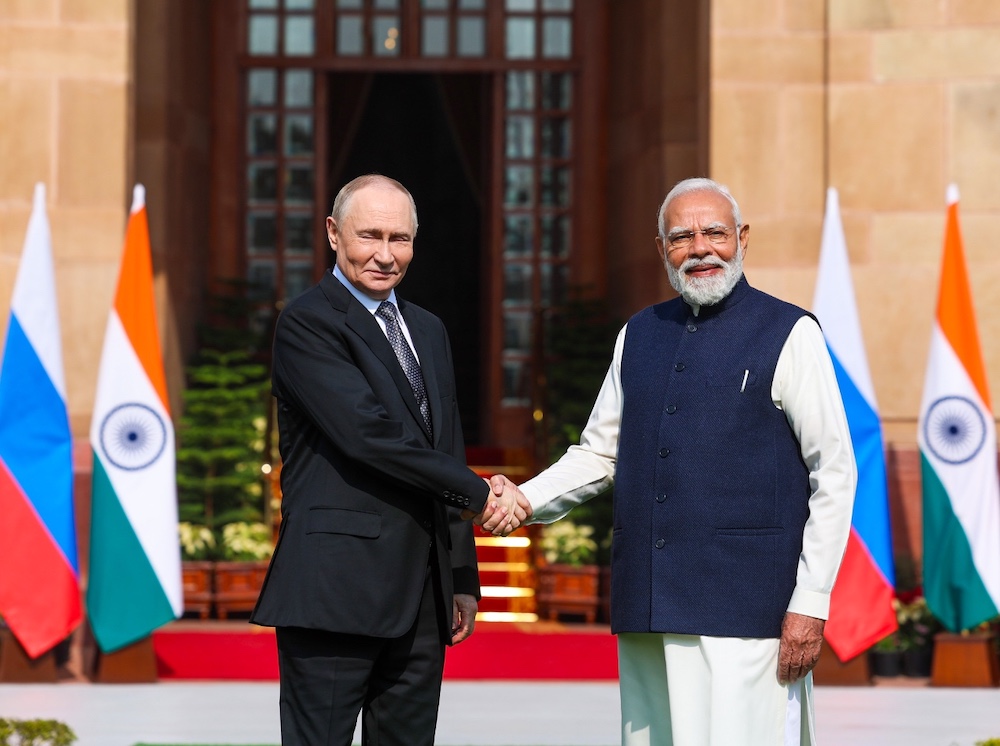 With the blood flowing on India-China line of control in Galwan valley of eastern Ladakh, Indian blood all across the globe have been boiling ever since the news of the killing of 20 Indian Army personnel came out. Indian soldiers were brutally attacked while ensuring retreat of uncalled transgression by Chinese army – the People’s Liberation Army on Indian territory.
With the blood flowing on India-China line of control in Galwan valley of eastern Ladakh, Indian blood all across the globe have been boiling ever since the news of the killing of 20 Indian Army personnel came out. Indian soldiers were brutally attacked while ensuring retreat of uncalled transgression by Chinese army – the People’s Liberation Army on Indian territory.
Since then the information warfare has been started between both these countries due to which the rumours related to clash and its aftereffect have been floating all around.
In such testing times, it is important for India to develop a long-term strategic policy to deal with aggressive China not only on the border, but also on multiple fronts which include diplomacy, economy, information technology, and geopolitics.
India-China border disputes are not new. India witnessed a full-fledged war with China in 1962 as a result of which India lost significant territory. The humiliating defeat by Chinese in upper Himalayan region not only lowered our defence forces morale, but also emboldened our principle adversary i.e. Pakistan, so much so that Pakistan attacked India in 1965. Indian forces regained their pride in 1965 war by defeating Pakistan under the strong leadership of our second Prime Minister Late Lal Bahadur Shashtri.
Indian Army with their regained pride handed a handsome defeat in short of second Indo-China war in 1967 which happened at the Sikkim border and resulted in three times higher casualties in Chinese force. Since then, several bilateral agreements at the diplomatic and military level ensured five decades of peace at the Indo-Chinese border, which finally broke down with close combat between two armies resulting in high number of casualties even though not a single bullet was fired.
With the clashes, the pseudo-bonhomie between two neighbours have disappeared. Chinese PLA started flexing muscle since start of the 2nd decade of 21st century not only with India, but with many countries including USA. The stand-off in Chumar and Doklam with India, South China sea dispute with south-east Asian countries and USA, Hong Kong dispute, increased sovereignty claims on Taiwan, etc. are some of the important examples that has happened in last 10 years.
Therefore, it will be important to analyse main factors behind Chinese assertiveness viz-a-viz different countries in order to formulate an effective combating strategy by India to mitigate the threat that China is posing every other day.
Chinese maintained low key affairs until they become economically powerful to challenge the most powerful nation and world leader, USA. They earned the status of world factory as they facilitated establishment of foreign multi-national industries and firms to take advantage of cheap labor and follow an export led growth model.
Over the years, Chinese utilized the increased foreign capital inflow and trade surplus to create their own global firms and human power resource which started dominating the world trade by start of 2nd decade. Chinese defense forces also benefitted with improvement in their local technology and increased budgetary allocations.
Chinese ambitions increased proportionally to Chinese wealth as they started looking to dominate the world in multiple way. Trade surplus with all major economic powers helped them to be more aggressive on the diplomatic and strategic fronts. Opposing china on world’s multilateral forum like United Nations, World Trade Organization (WTO), International Monetary Foundation (IMF), World Bank, BRICS, G7, etc. became difficult for every country due to fear of deterioration in bilateral relations which could result in disruption of the economic supply chain. Emboldened by silence of big world powers, Chinese have been on the run to assert their sovereignty on new areas including neighbor’s territory, strategic islands, sea boundaries, and even on unexplored and inhibited areas of Arctic and Antarctica, which are governed by international cooperation and consensus.
As the world economy has entered into most severe recession since the Great Depression of 1929 due to outbreak of Covid-19 as the global pandemic, calls for international independent investigation for ensuring accountability of China and World Health Organization (WHO) have been gathering momentum at different world forums. This has isolated China for the first time, even though Chinese were involved in numerous attempts to scuffle democratic institutions and environment laws which could have been easily used by western world to not only scrutinize Chinese behavior, but also intervene to correct the world order.
India’s firm stand against Chinese aggression at the time of Doklam dispute had clearly conveyed that India is one of the countries that can stand firm against Chinese bullying.
Later, Indian boycott of Regional Comprehensive Economic Partnership (RCEP) to save its strategic interest cemented this reputation. Chinese have assessed India as a threat to their global ambition and therefore, Chinese muscle flexing should not be any surprise, but a rational expectation for strategic policy formulation.
Since the information warfare has already started with lethal attack and counter-attack by two armies, it is important for India to evaluate critical policy intervention at multiple fronts. It is a fact that China has a huge trade surplus with India, with China exporting 3 times more than what India exports to China.
Currently, Indian export to China stands at 5% of total export while import stands at 14%. It shows that the Indians are contributing more into Chinese economy than Chinese are contributing to Indian economy.
If the trade basket is looked at, India’s export to China mostly consists of raw materials and China’s export to India mostly consists of finished consumer and capital goods. The trade deficit of India with China is a resultant of this imbalance as raw materials are cheaper than the final products.
According to the PHD Research Bureau, top ten items of Indian export to China which covers 72.5% of total export value with China consists of cotton, ores, organic chemicals, mineral fuels and its products, copper, plastering materials, electrical components, mechanical appliances, animal fat and oils, and plastic products, whereas top ten items imported from China covering for 78% of total Chinese imports in India consist of Electrical machinery and equipment, heavy machinery, organic chemicals, plastic final products, ships structure, iron and steel, fertilizers, optical devices, medical equipment, and automobile components.
India can formulate two-fold strategies to tackle Chinese aggression via economic front.
First, damage Chinese economic interest in the domestic market by locally producing all the high value and volume products, especially in intermediate and final goods segment. This will help in import substitution and plug the gap of trade deficit which will not only lower the Chinese economic growth, but also increases the Indian GDP at much faster rate. Intermediate goods are finished goods, but further used by another industry to produce final good with significant addition in value. For example, iron ore is the raw material which is used to produce iron blocks final product, but further used by railway wagon industry to produce final good for ultimate consumption and thereby, increasing the value many times. Make in India initiative could have been game changer in last 5 years, but got entangled in India’s infamous red tape bureaucracy. Nonetheless, this could be re-energized with the strategic objective of “aatmanirbharta” and a new slogan of “Make for India In India” campaign.
Second, damage Chinese interest by producing for world market which requires high-quality output at comparable prices. Fortunately, the USA and European nations are looking for an alternate supply chain for two reasons. 1. Chinese firm’s output are known for inferior quality and could not be relied upon. The recent fiasco in different parts of the world related to unusable quality of Personal Protection Equipment (PPE) supply by China during deadly impact of Covid-19 is one such example.
Chinese have utilized the Covid-19 economic recession to increase their stakes in foreign firms in an unethical way which is one of the reasons why capitalist are willing to move away their long-term investment from China at any cost. Both of these reasons have created an opportunity for India to attract foreign capital and investment in manufacturing and service industry. Indian needs to start a strategic initiative of “Make in India for World” which will disrupt Chinese trade with rest of the world.
Being most populous country of the world, economic recession will damage Chinese interest more than anything else. High rate of unemployment among Chinese population will embolden internal voices which are suppressed as of now due to fear of repression.
On top of that, diplomatic efforts are required to engage China on multiple fronts. First, multi-lateral agreements need to be cemented with the objective to tackle Chinese threat on world order. Second, geopolitical interests of several countries could be channeled towards tackling Chinese aggression.
Tibet, Hong Kong, and Taiwan need international recognition. Hong Kong being one of the richest financial zones of liberalized world need urgent help to preserve their capitalistic nature. USA and Britain have direct interest in Hong Kong political future which needs to be tapped by India for long term strategic interest. The military front is already open and recent rebuttal of “Bihar Regiment”, one of most decorated regiments of Indian Army have destroyed the aura of Chinese PLA invincibility. Americans must have noted the entire episode to gauge the level of PLA’s quality in fighting war in modern times. Chinese seems to be interested more in propaganda rather than concrete actions.
Unlike Chinese, USA and Indian defence forces likes to keep their action and mission highly secretive, which gives them a definitive edge during live operation.
It is clear that India is not up to the size of China in terms of economy. But wars, be it physical, strategic, economical or informative, are not merely dependent on size. Otherwise, Vietnam and Afghanistan would not have any chance against Americans and Russians, respectively.
India needs to recalibrate its approach on all fronts keeping long terms strategic moves at the center and prepare for tackling Chinese aggression not only on its borders, but far away from it on the platforms of world’s multilateral bodies. Surely, India has capability to protect its strategic national interest in all weather conditions.
The author is an economist working with a foreign bank as an Assistant Vice-President. The opinions expressed in this article are the author's own.










